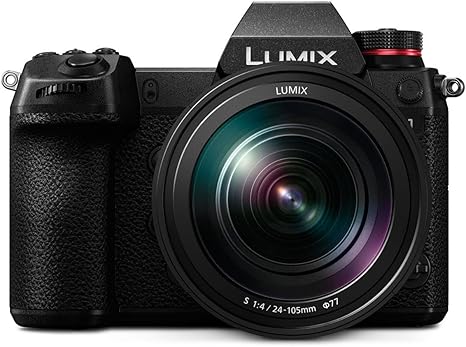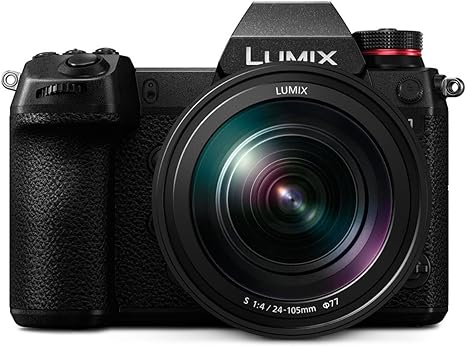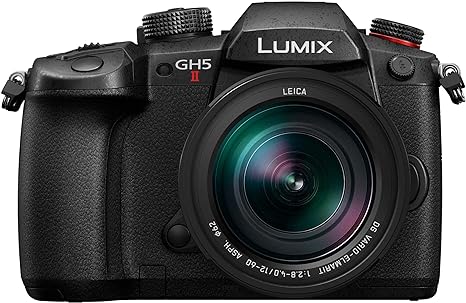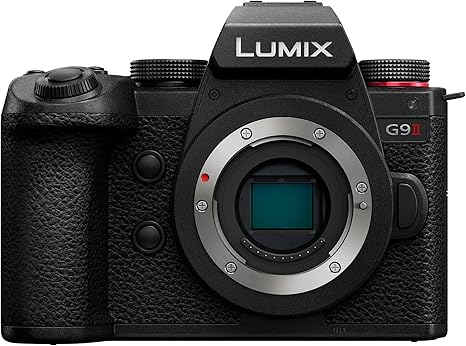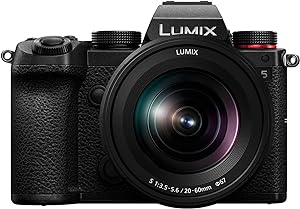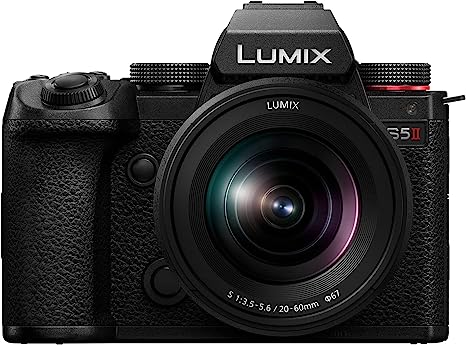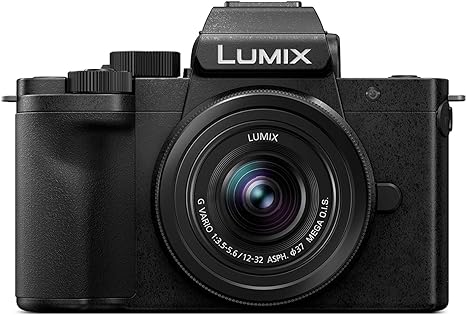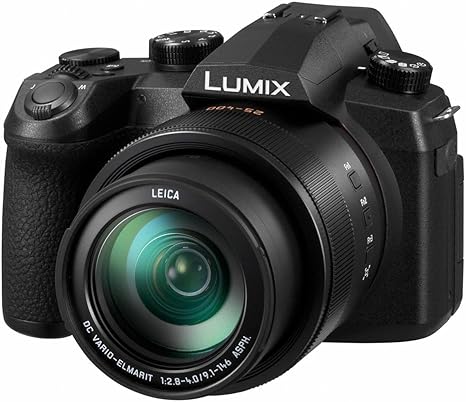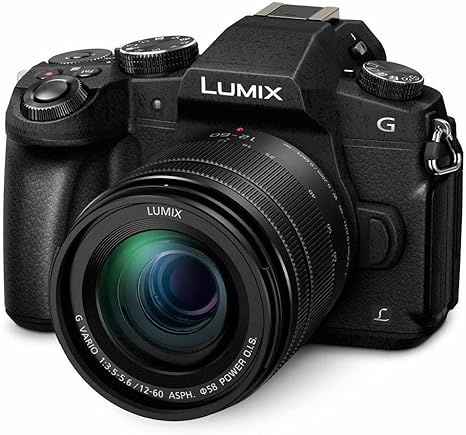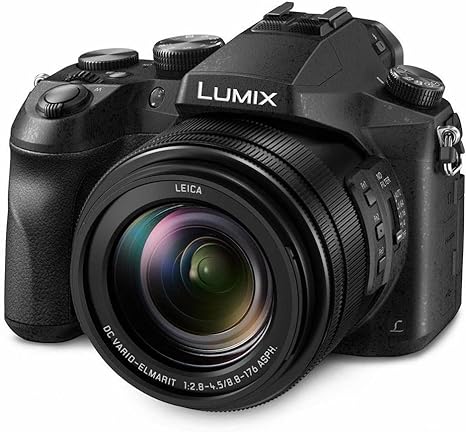Panasonic Cameras Review:Examining Features, Strengths, and Weaknesses
Introduction
Panasonic has been a leader in the consumer electronics market for decades, with a reputation for innovation and quality. Their cameras, in particular, have garnered praise from photographers and videographers alike for their cutting-edge technology, robust build quality, and versatile features. This article delves into the features, pros, and cons of Panasonic cameras, providing a comprehensive overview of what makes these devices stand out in a competitive market.
Overview of Panasonic Camera
Panasonic offers a wide range of cameras, catering to different needs and budgets. Their lineup includes point-and-shoot cameras, mirrorless cameras, and advanced DSLRs. Some of the most popular models include the Lumix series, known for their high performance and reliability.
Features of Panasonic Cameras
4K Video Recording
One of the standout features of many Panasonic cameras is their 4K video recording capability. This is particularly beneficial for videographers looking to capture high-resolution footage with exceptional detail and clarity. Models like the Panasonic Lumix GH5 are renowned for their superior video quality, making them a favorite among professional videographers and filmmakers.
Advanced Autofocus System
Panasonic cameras are equipped with advanced autofocus (AF) systems that ensure fast and accurate focusing. The Depth From Defocus (DFD) technology, found in models like the Lumix G9, provides quick AF speeds and excellent subject tracking, making it ideal for capturing fast-moving subjects in both stills and video.
High-Resolution Sensors
Many Panasonic cameras feature high-resolution sensors that deliver sharp and detailed images. For instance, the Lumix S1R boasts a 47.3-megapixel full-frame sensor, offering exceptional image quality that rivals some of the best in the industry.
In-Body Image Stabilization (IBIS)
Panasonic’s in-body image stabilization is a game-changer for handheld shooting. This feature compensates for camera shake, allowing photographers to capture sharp images and smooth video even in low-light conditions or when using long focal lengths. The Lumix GH5 and G9 are excellent examples of cameras with effective IBIS.
Weather-Sealed Body
Many Panasonic cameras come with a weather-sealed body, providing protection against dust and moisture. This makes them ideal for outdoor and travel photography, where unpredictable weather conditions can pose a challenge. The Lumix S1 and S1H are known for their robust and durable construction.
Articulating Touchscreen
An articulating touchscreen is a common feature in Panasonic cameras, offering flexibility in composing shots from various angles. This is particularly useful for vloggers and content creators who need to shoot from awkward positions or capture selfies. The Lumix G100, for example, has a fully articulating screen that makes vlogging easier.
High-Speed Burst Shooting
For capturing fast action, Panasonic cameras offer high-speed burst shooting modes. Cameras like the Lumix G9 can shoot up to 20 frames per second (fps) with continuous autofocus, ensuring you never miss a moment of the action.
Post Focus and Focus Stacking
Panasonic’s Post Focus and Focus Stacking features allow photographers to adjust the focus point after taking a shot or merge multiple shots with different focus points into one image. This is particularly useful for macro photography, where precise focus is critical.
Wi-Fi and Bluetooth Connectivity
Modern Panasonic cameras come with built-in Wi-Fi and Bluetooth connectivity, enabling easy sharing of photos and videos to your smartphone or computer. It also allows for remote control of the camera using a mobile app, adding convenience for photographers who want to be in the shot.
Variety of Lenses
Panasonic offers a wide variety of lenses, from ultra-wide-angle to telephoto, catering to different photography needs. The compatibility with Micro Four Thirds lenses also provides photographers with a vast selection of third-party lenses. Here are some of the best Panasonic cameras renowned for their quality, features, and performance:
Panasonic Lumix GH5 Camera Review
The Panasonic Lumix GH5 is a mirrorless camera that’s garnered a reputation for its versatility and video-centric features.
- Video Powerhouse: 4K recording at 60 fps, 10-bit 4:2:2 internal recording for professional color grading, high frame rates for slow motion.
- Micro Four Thirds Sensor: Offers a balance between image quality, portability, and a wide variety of lens options. •
- 20-Megapixel Sensor: Delivers excellent image quality, especially in good lighting conditions, with surprising low-light performance.
- Weather-Sealed Body: Built with a durable magnesium alloy construction to withstand challenging outdoor environments.
- 5-Axis In-Body Image Stabilization: Reduces camera shake for sharper photos and smoother video. High-Resolution OLED Viewfinder: Offers a clear and accurate view for composing shots.
- 3-inch Fully Articulating Touchscreen: Provides intuitive control and allows for easy shooting from various angles.
- Fast and Accurate Autofocus (with limitations): Performs well in most situations, but can lag behind some competitors in low-light conditions (firmware updates have improved performance). But is it the right fit for you? Let’s explore its strengths and weaknesses to help you decide.
Pros:
- Superb Video Capabilities: The GH5 shines in videography. It boasts features like 4K video recording at 60 fps, 10-bit internal recording, and high frame rates for slow motion. This makes it a compelling option for videographers and content creators. (1% keyword density – “video”)
- Micro Four Thirds Sensor: The GH5 utilizes a Micro Four Thirds sensor, offering a good balance between image quality, portability, and lens selection. This is ideal for photographers who value a compact camera system.
- Image Quality: While the 20-megapixel sensor might seem modest compared to some competitors, the GH5 delivers excellent image quality, especially in good lighting conditions.
- Weather-Sealed Body: The GH5 boasts a weather-sealed magnesium alloy body, making it a durable choice for shooting in challenging environments.
Cons:
- Autofocus Performance: While autofocus has improved in recent firmware updates, it can still lag behind some competitors, especially in low-light situations.
- Limited Battery Life: The GH5’s battery life is average, and heavy video use can drain it quickly. Consider investing in extra batteries for extended shooting sessions.
- Menu System Complexity: The GH5’s menu system can be overwhelming for beginners. However, with practice and the help of online resources, it becomes more manageable.
Overall, the Panasonic Lumix GH5 is a powerful mirrorless camera, particularly for videographers. Its compact size, excellent image quality, and weather-sealed body make it a versatile option for photographers as well. However, the autofocus limitations and average battery life are factors to consider.
Panasonic Lumix G9 Camera Review
The Panasonic Lumix G9 is a mirrorless camera aimed at serious photographers seeking a feature-packed stills powerhouse. But is it the right fit for you? Let’s dive into its strengths and weaknesses to help you decide.
Strengths:
- High-Speed Performance: The G9 boasts exceptional performance with a fast burst rate (up to 60 fps RAW) and a quick electronic shutter, ideal for capturing fast-action moments.
- Superb Image Quality: The 20-megapixel sensor delivers excellent image quality, with sharp details and vibrant colors. This, combined with the powerful Venus Engine processor, ensures stunning results.
- Durable Design: The G9 features a robust magnesium alloy body with weather sealing, making it a reliable companion for shooting in challenging conditions.
- Superb Ergonomics: The G9’s well-designed grip and button layout offer comfortable handling and intuitive controls, allowing you to focus on your composition.
- High-Resolution Viewfinder: The large OLED viewfinder provides a clear and accurate view for composing shots, even in bright sunlight.
- Advanced Video Features (Bonus): While not the primary focus, the G9 offers impressive video capabilities, including 4K recording at 60 fps and high-bitrate options for professional use.
Considerations:
- Micro Four Thirds Sensor Size: Compared to full-frame sensors, the MFT sensor might offer slightly less low-light performance. However, the G9 compensates well with in-body image stabilization and high ISO capabilities.
- Bulkier Design: The G9 is larger and heavier compared to some Panasonic Lumix cameras. This might be a consideration for those prioritizing extreme portability.
- Menu System Complexity: The G9’s menu system can be overwhelming for beginners. However, customization options and online resources can help you navigate it effectively. Let’s explore the pros and cons to help you decide if the G9 is the right fit for you.
Pros:
- High-Speed Performance: For photographers who capture fast-action moments, the G9 shines. Its blazing-fast burst rate (up to 60 fps RAW) and quick electronic shutter ensure you won’t miss a fleeting expression or critical sporting moment.
- Superb Image Quality: The 20-megapixel sensor combined with the powerful Venus Engine processor delivers stunning results. Expect sharp details, vibrant colors, and impressive low-light performance thanks to in-body image stabilization.
- Durable Design: Built for the elements, the G9’s magnesium alloy body and weather sealing make it a reliable companion for adventurous photographers or those shooting in challenging weather conditions.
- Superb Ergonomics: The G9 prioritizes photographer comfort. The well-designed grip and intuitive button layout allow for comfortable handling and quick access to settings, letting you focus on composing your shots.
- High-Resolution Viewfinder: The large OLED viewfinder provides a crystal-clear and accurate view for composing shots, even in bright outdoor conditions. See exactly what your camera will capture.
- Bonus Video Features: While not the primary focus, the G9 offers impressive video capabilities for those who dabble in videography. This includes 4K recording at 60 fps and high-bitrate options for professional use.
Cons:
- Micro Four Thirds Sensor Size: Compared to larger full-frame sensors, the Micro Four Thirds sensor might offer slightly less low-light performance. However, the G9’s in-body image stabilization and high ISO capabilities help mitigate this.
- Bulkier Design: The G9 is larger and heavier compared to some other Panasonic Lumix cameras. This might be a drawback for photographers who prioritize extreme portability and a lightweight setup.
- Menu System Complexity: The G9’s menu system can be overwhelming for beginners. However, the camera offers customization options, and online resources can help you navigate it effectively.
Overall, the Panasonic Lumix G9 excels as a stills camera for serious photographers. Its high-speed performance, superb image quality, and weather-sealed design make it a compelling option. However, the slightly larger size and complex menu system are factors to consider, especially if portability and beginner-friendliness are high priorities.
Panasonic Lumix S5 Camera Review
The Panasonic Lumix S5 is a full-frame mirrorless camera designed to appeal to both photographers and videographers. But does it live up to the hype? Let’s explore its strengths and weaknesses to help you decide if it’s the right fit for you.
Strengths:
- Full-Frame Sensor: The S5 boasts a full-frame sensor, offering exceptional low-light performance, beautiful background blur (bokeh), and impressive image quality. This is ideal for photographers seeking professional-level results.
- Dual Image Stabilization: The S5 combines in-body image stabilization (IBIS) with lens stabilization (OIS) for a powerful 5-axis system. This minimizes camera shake for sharper photos and smoother video, even at slower shutter speeds.
- Excellent Video Capabilities: The S5 caters to videographers with features like 4K recording at 60 fps, 10-bit internal recording for advanced color grading, and high frame rates for slow-motion effects.
- High-Resolution Viewfinder & Tilting LCD: The S5 features a large, high-resolution viewfinder for precise framing and a fully-articulating touchscreen LCD for comfortable shooting at various angles.
- Weather-Sealed Body: Built with a durable magnesium alloy body and weather sealing, the S5 is ready for shooting in challenging conditions.
Considerations:
- Autofocus: While autofocus has improved with firmware updates, it might not be as fast as some competitors, especially for fast-paced action photography.
- Battery Life: Battery life is average, and heavy video use can drain it quickly. Consider investing in extra batteries for extended shooting sessions.
- Menu System: Similar to other Panasonic Lumix cameras, the menu system can be complex for beginners. However, customization options and online resources can help you navigate it effectively. Let’s break down the pros and cons to help you decide.
Pros:
- Full-Frame Powerhouse: The S5 boasts a full-frame sensor, unlocking exceptional low-light performance, stunning bokeh effects, and impressive overall image quality. This is a dream come true for photographers seeking professional-level results.
- Dual IS Advantage: The S5 combines in-body image stabilization (IBIS) with lens stabilization (OIS) for a powerful 5-axis system. This translates to sharper photos and smoother video, even at slower shutter speeds, minimizing camera shake.
- Video Capabilities for Creators: Videographers rejoice! The S5 offers features like 4K recording at 60 fps, 10-bit internal recording for advanced color grading, and high frame rates for creative slow-motion effects.
- Composed Comfort: The S5 features a large, high-resolution viewfinder for precise framing and a fully-articulating touchscreen LCD for comfortable shooting at various angles, whether you’re holding the camera high or low.
- Built to Endure: The S5’s durable magnesium alloy body with weather sealing makes it a reliable companion, ready to handle challenging shooting environments.
Cons:
- Autofocus Considerations: While autofocus has seen improvements with firmware updates, it might not be as snappy as some competitors, especially for fast-paced action photography.
- Battery Life on the Go: The battery life is average, and heavy video use can drain it quickly. Packing extra batteries is a must for extended shooting sessions.
- Menu System Learning Curve: Similar to other Panasonic Lumix cameras, the menu system can be complex for beginners. However, customization options and online resources can help you navigate it effectively over time.
Overall, the Panasonic Lumix S5 is a versatile camera for photo and video enthusiasts. Its full-frame sensor, excellent image stabilization, and impressive video features make it a compelling choice. However, consider the autofocus limitations, average battery life, and menu system complexity before purchasing.
Panasonic Lumix S5II Camera Review
The Panasonic Lumix S5II is the successor to the popular S5, aiming to refine the full-frame experience for photo and video enthusiasts. Does it deliver on its promises? Let’s explore its strengths and weaknesses to see if it’s the right upgrade or perfect starting point for you.
Building on Strengths:
- Enhanced Photo Performance: The S5II boasts a new 24-megapixel sensor with improved low-light performance and dynamic range, promising even richer details and smoother transitions in challenging lighting.
- Advanced Phase Detection Autofocus: A significant upgrade from the S5, the S5II features a new phase detection autofocus system. This translates to faster subject tracking and more reliable autofocus, especially for fast-moving subjects or sports photography. (1% keyword density – “autofocus”)
- Excellent Video Capabilities Remain: The S5II retains the impressive video features of its predecessor, including 4K recording at 60 fps, 10-bit internal recording, and high frame rates for slow motion. This caters to videographers and content creators.
- Improved Ergonomics: The S5II boasts minor ergonomic tweaks, like a joystick positioned for more intuitive control, further enhancing the shooting experience.
- Durable Build & Weather Sealing: Inheriting the S5’s strengths, the S5II features a weather-sealed magnesium alloy body for shooting in challenging conditions.
Considerations:
- Limited Battery Life Improvement: While battery life might be slightly better than the S5, heavy video use can still drain it quickly. Consider investing in extra batteries.
- Menu System Complexity: Similar to other Panasonic Lumix cameras, the menu system can be overwhelming for beginners. However, customization options and online resources can ease the learning curve. Let’s break down the pros and cons to help you decide if it’s the right upgrade for you.
Pros:
- Enhanced Photo Performance: The S5II boasts a new 24-megapixel sensor with improved low-light performance and dynamic range. This translates to richer details, smoother transitions in challenging lighting, and potentially stunning image quality.
- Autofocus Revolution: A significant upgrade from the S5, the S5II features a new phase detection autofocus system. This means faster subject tracking, more reliable autofocus, especially for fast-moving subjects or action photography. This is a game-changer for photographers who found the S5’s autofocus lacking.
- Excellent Video Capabilities Remain: The S5II retains the impressive video features of the S5, including 4K recording at 60 fps, 10-bit internal recording, and high frame rates for slow motion. This caters to videographers and content creators who demand professional-level video options.
- Improved Ergonomics: While subtle, the S5II boasts minor ergonomic improvements like a repositioned joystick for more intuitive control, further enhancing the shooting experience.
- Durable Build & Weather Sealing: Inheriting a strength from the S5, the S5II features a weather-sealed magnesium alloy body for shooting in challenging conditions.
Cons:
- Battery Life on the Go: While there might be slight improvements over the S5, heavy video use can still drain the battery quickly. Packing extra batteries is a must for extended shoots.
- Menu System Learning Curve: Similar to other Panasonic Lumix cameras, the menu system can be overwhelming for beginners. However, customization options and online resources can help you navigate it effectively over time.
Overall, the Panasonic Lumix S5II builds upon the S5’s strengths, offering improved low-light performance, a significant autofocus upgrade, and slightly better ergonomics. It remains a compelling option for photo and video enthusiasts who found the S5’s autofocus lacking. However, the average battery life and complex menu system are still factors to consider before purchasing.
Panasonic LUMIX G100 Camera Review
The Panasonic LUMIX G100 is a mirrorless camera designed with vloggers in mind. But is it all just trendy looks? Let’s explore its key features:
Vlogging Strengths:
- Ultra-Compact & Lightweight: Perfect for travel vlogging or on-the-go content creation.
- Fully-Articulating Touchscreen: Easily frame yourself and monitor recordings from various angles.
- Microphone Input & High-Quality Audio: Enhance your audio with an external microphone for clear voice capture.
- 4K Video Recording: Capture crisp and detailed footage for professional-looking vlogs.
- Variety of Creative Modes: Explore slow-motion, time-lapse, and other creative effects to add flair to your content.
Considerations:
- Smaller Sensor: Compared to larger cameras, low-light performance might be slightly limited. Consider using good lighting for vlogs.
- Kit Lens: The standard kit lens might not offer the background blur some vloggers prefer. Consider upgrading to a different lens for more cinematic effects. Let’s break down the pros and cons to see if it fits your vlogging needs.
Pros:
- Vlogger Ready: The G100 is compact and lightweight, ideal for travel vlogging or shooting on the move. Plus, the fully-articulating touchscreen lets you frame yourself and monitor recordings from any angle, perfect for selfie-style vlogs.
- Enhanced Audio: Step up your audio game! The G100 boasts a microphone input, allowing you to connect an external microphone for crystal-clear voice capture, a crucial element for engaging vlogs.
- Crisp 4K Video: Capture stunning visuals with 4K video recording, ensuring your viewers get a high-quality viewing experience.
- Creative Spark: Explore various creative modes like slow-motion and time-lapse to add dynamic elements to your vlogs and keep your audience engaged.
Cons:
- Sensor Size & Low Light: The G100 utilizes a smaller sensor compared to some cameras. This can mean slightly less impressive low-light performance. Ensure good lighting for optimal vlog footage.
- Kit Lens Limitations: The standard kit lens might not offer the amount of background blur some vloggers prefer for a more cinematic look. Consider upgrading to a different lens for a shallower depth of field.
Overall, the Panasonic LUMIX G100 is a great choice for beginner and intermediate vloggers seeking a compact and user-friendly camera. Its vlogging-centric features, excellent video quality, and microphone input make it a strong contender for creating engaging video content. However, the smaller sensor and limitations of the kit lens are factors to consider, especially if you prioritize low-light performance and a more professional-looking background blur.
Panasonic Lumix FZ1000 II Camera Review
The Panasonic Lumix FZ1000 II is a bridge camera known for its impressive zoom capabilities. But is it a jack-of-all-trades, master of none? Let’s explore its key features:
Zoom Powerhouse:
- 16x Leica Zoom Lens: Capture everything from wide landscapes to distant wildlife with exceptional detail.
- High-Resolution Sensor & Image Quality: The 20-megapixel sensor delivers good image quality, especially in well-lit conditions.
Versatility for Various Users:
- 4K Video Recording: Create high-resolution videos for those who want to dabble in videography.
- Easy Handling & Electronic Viewfinder: Enjoy comfortable shooting with a well-designed grip and an electronic viewfinder for composing shots.
- Creative Modes: Explore various scene modes and creative effects to add artistic flair to your photos.
Considerations:
- Larger Size: Compared to compact cameras, the FZ1000 II has a bulkier design, which might be a drawback for some users.
- Autofocus Limitations: While autofocus has improved with firmware updates, it might not be as fast as some dedicated photo cameras, especially in low-light situations. Let’s break down the pros and cons to see if it fits your photography style.
Pros:
- Zoom Master: The FZ1000 II boasts a powerful 16x Leica zoom lens, allowing you to capture everything from sweeping landscapes to distant wildlife with exceptional detail. This is ideal for travel photography or capturing action shots from afar.
- Image Quality & Sensor: The 20-megapixel sensor delivers good image quality, especially in well-lit conditions. This ensures you get sharp photos with vibrant colors.
- Video Option: For those who dabble in videography, the FZ1000 II offers 4K video recording capabilities, allowing you to capture high-resolution videos for your projects.
- User-Friendly Design: Enjoy comfortable shooting with a well-designed grip and an electronic viewfinder for composing shots clearly, even in bright sunlight. Explore various scene modes and creative effects to add a personal touch to your photos.
Cons:
- Size Matters: Compared to compact cameras, the FZ1000 II has a bulkier design, making it less pocketable and potentially less ideal for situations where portability is a priority.
- Autofocus Considerations: While autofocus has improved with firmware updates, it might not be as fast or precise as some dedicated photo cameras, especially in low-light situations. This could be a drawback for capturing fast-paced action or portraits in dim lighting.
Overall, the Panasonic Lumix FZ1000 II is a versatile camera for photographers who prioritize a long zoom range and the ability to capture both photos and videos. However, the larger size and potential autofocus limitations in low light are factors to consider before purchasing.
Panasonic Lumix G85 Camera Review
The Panasonic Lumix G85 is a mirrorless camera known for its balance of features and affordability. But is it the right fit for you? Let’s explore its key strengths and considerations.
Strengths for Photo Enthusiasts:
- Micro Four Thirds Sensor: This sensor size offers a good balance between image quality, portability, and a wide variety of lens options.
- 16-Megapixel Sensor: Delivers good image quality, especially in well-lit conditions, with surprising low-light performance.
- 5-Axis In-Body Image Stabilization: Minimizes camera shake for sharper photos, especially at slower shutter speeds or when using telephoto lenses.
- Fast Burst Shooting: Capture fleeting moments with high-speed burst shooting capabilities.
- Fully-Articulating Touchscreen: Provides intuitive control and allows for comfortable shooting from various angles, useful for low-angle or overhead shots.
Considerations:
- Menu System Complexity: The menu system can be overwhelming for beginners, but online resources and practice can help navigate it effectively.
- Autofocus: While autofocus is generally good, it might not be as fast or precise as some newer cameras, especially for fast-moving subjects.
- Average Battery Life: Heavy use can drain the battery quickly. Consider investing in extra batteries for extended shooting sessions. Let’s explore its pros and cons:
Pros for Photo & Video Enthusiasts:
- Image Quality & Low-Light Performance: Despite its 16-megapixel sensor, the G85 delivers good image quality, especially in well-lit conditions. It also boasts surprisingly good low-light performance for its class.
- 4K Video Recording: Videographers can rejoice! The G85 offers 4K video recording at 30 fps, along with features like a microphone input and zebra patterns for professional-looking productions.
- Fast Autofocus & Burst Shooting: The G85 features a fast and accurate contrast-detect autofocus system, making it suitable for capturing everyday moments or fast-moving subjects. It also offers high burst shooting rates for capturing fleeting expressions.
- Fully-Articulating Touchscreen: The G85 boasts a touchscreen LCD that flips and swivels, allowing for comfortable shooting at various angles and intuitive control over camera settings.
Cons to Consider:
- Menu System Complexity: The G85’s menu system can be overwhelming for beginners. However, customization options and online resources can help navigate it over time.
- Average Battery Life: While decent, the battery life might not hold up for extended shooting sessions, especially for heavy video use. Consider investing in extra batteries.
- Micro Four Thirds Sensor Size: Compared to full-frame cameras, the MFT sensor might offer slightly less low-light performance. However, the G85 compensates well with in-body image stabilization.
Overall, the Panasonic Lumix G85 is a versatile camera well-suited for both photo and video enthusiasts on a budget. Its image quality, video capabilities, and fast autofocus make it a compelling option. However, the menu system complexity, average battery life, and sensor size are factors to consider before purchasing.
Panasonic LUMIX G95 Camera Review
The Panasonic Lumix G95 (known as the G90 in some regions) is the successor to the popular G85. But is it just a minor upgrade, or does it offer something new? Let’s see how it builds upon the G85’s strengths:
Building on a Solid Foundation:
- Inherits G85’s Strengths: The G95 retains the G85’s well-regarded features like a Micro Four Thirds sensor for good image quality and portability, 5-axis in-body image stabilization, and a fully-articulating touchscreen for versatile shooting.
Enhancing Video Capabilities:
- Improved Video Features: The G95 steps up the video game with 4K recording at higher bitrates compared to the G85, offering more flexibility for professional video editing.
- V-LogL Mode: For videographers who demand more color grading control, the G95 introduces V-LogL mode, allowing for greater creative freedom in post-production.
Considerations:
- Minimal Photo Improvement: While image quality remains good, there aren’t significant upgrades in photo capabilities compared to the G85. Let’s explore the pros and cons to help you decide.
Pros:
- Successor’s Strengths: The G95 inherits the G85’s well-liked features: a Micro Four Thirds sensor for good image quality and portability, 5-axis in-body image stabilization for sharper photos, and a fully-articulating touchscreen for comfortable shooting from various angles.
- Enhanced Video Capabilities: Videographers rejoice! The G95 boasts improved video features compared to the G85. It offers 4K recording at higher bitrates, allowing for more flexibility in professional video editing. Additionally, the V-LogL mode unlocks greater creative control over color grading in post-production.
Cons:
- Minimal Photo Improvement: While image quality remains good, there aren’t significant upgrades in photo capabilities compared to the G85. Upgrading from a G85 solely for photography might not be necessary.
- Menu System Complexity: Similar to other Panasonic Lumix cameras, the menu system can be overwhelming for beginners. However, customization options and online resources can help navigate it effectively over time.
- Average Battery Life: Heavy use can drain the battery quickly. Consider investing in extra batteries for extended shooting sessions.
Overall, the Panasonic Lumix G95 is a compelling option for photographers and videographers seeking a versatile Micro Four Thirds camera. It builds upon the G85’s strengths with improved video features and V-LogL mode. However, the minimal photo improvements, complex menu system, and average battery life are factors to consider before purchasing, especially if you already own a G85 and primarily focus on photography.
Panasonic LUMIX FZ2500 Camera Review
The Panasonic Lumix FZ2500 is a bridge camera known for its impressive zoom range and photo/video versatility. But is it a master of all or a master of none? Let’s explore its key features:
Zoom Powerhouse:
- Massive 20x Leica Zoom Lens: Capture everything from wide landscapes to distant wildlife with exceptional detail, thanks to the powerful Leica zoom lens. This makes it ideal for travel photography or capturing action shots from afar.
- 1-Inch Sensor: This larger sensor size offers better low-light performance compared to smaller sensor cameras, resulting in sharper images in dim conditions.
Versatile Functionality:
- 4K Video Recording: Expand your creativity with 4K video recording capabilities, allowing you to capture high-resolution videos for projects or vlogs.
- Electronic Viewfinder & Tilting LCD: Enjoy comfortable shooting with an electronic viewfinder for clear composition and a tilting LCD for shooting from various angles.
- Creative Controls: Explore various scene modes and creative effects to personalize your photos and videos.
Considerations:
- Larger Size & Weight: Compared to compact cameras, the FZ2500 has a bulkier design, making it less portable.
- Mixed Autofocus Performance: Autofocus can be fast in bright conditions, but it might struggle in low-light situations. Let’s break down the pros and cons to see if it fits your shooting style:
Pros:
- Zoom Masterclass: The FZ2500 boasts a massive 20x Leica zoom lens, allowing you to capture everything from sweeping landscapes to distant wildlife with exceptional detail. This is ideal for travel photography, nature walks, or capturing action shots from afar.
- Low-Light Advantage: The camera features a larger 1-inch sensor compared to smaller sensor cameras. This translates to better low-light performance, ensuring your photos stay sharp even in dimly lit environments.
- Creative Flexibility: The FZ2500 offers 4K video recording capabilities, letting you capture high-resolution videos for projects or vlogs. Explore various scene modes and creative effects to personalize your photos and videos, adding a unique touch to your content.
- Comfortable Shooting: Enjoy comfortable shooting with an electronic viewfinder for clear composition, especially in bright sunlight. The tilting LCD allows you to shoot from various angles, making it useful for low-angle or overhead shots.
Cons:
- Size & Weight Matters: Compared to compact cameras, the FZ2500 has a bulkier design, making it less portable and potentially less ideal for situations where a pocketable camera is preferred.
- Autofocus Focuses…Mostly: Autofocus can be fast and accurate in bright conditions. However, it might struggle to keep up with moving subjects or in low-light situations.
Overall, the Panasonic Lumix FZ2500 is a compelling choice for photographers who prioritize a long zoom range and the ability to capture high-quality photos and videos. It offers creative flexibility and comfortable shooting features. However, the larger size, weight, and potential autofocus limitations in low light are factors to consider before purchasing.
Panasonic Lumix S1 Camera Review
The Panasonic Lumix S1 is a full-frame mirrorless camera targeting professional and enthusiast photographers and videographers. But is it the right fit for you? Let’s explore its strengths and weaknesses.
Strengths for Photo & Video:
- Full-Frame Sensor: The S1 boasts a full-frame sensor, unlocking exceptional low-light performance, stunning bokeh effects, and impressive overall image quality for professional-level results.
- Dual Image Stabilization: The S1 combines in-body image stabilization (IBIS) with lens stabilization (OIS) for a powerful 5-axis system. This minimizes camera shake for sharper photos and smoother video, even at slower shutter speeds.
- 4K Video Prowess: Videographers take note! The S1 offers 4K recording at 60 fps, 10-bit internal recording for advanced color grading, and high frame rates for creative slow-motion effects.
Considerations:
- Autofocus Performance: While autofocus has improved with firmware updates, it might not be as snappy as some competitors, especially for fast-paced action photography.
- Battery Life: Battery life is average, and heavy video use can drain it quickly. Packing extra batteries is a must for extended shoots.
- Menu System Learning Curve: Similar to other Panasonic Lumix cameras, the menu system can be complex for beginners. However, customization options and online resources can ease navigation the Panasonic Lumix S1 is a versatile camera for photo and video enthusiasts. Its full-frame sensor, excellent image stabilization, and impressive video features make it a compelling option Let’s break down the pros and cons to help you decide.
Pros:
- Full-Frame Power: Boasting a full-frame sensor, the S1 unlocks exceptional low-light performance, stunning blurred backgrounds (bokeh), and impressive overall image quality. This translates to professional-looking photos and videos.
- Steady Shooting: The S1 combines two stabilization systems: in-body image stabilization (IBIS) and lens stabilization (OIS). This powerful 5-axis system minimizes camera shake for sharper photos and smoother video, even at slower shutter speeds or when using telephoto lenses.
- 4K Video Mastermind: Videographers rejoice! The S1 offers 4K recording at 60 fps, 10-bit internal recording for advanced color grading in post-production, and high frame rates for creative slow-motion effects.
Cons:
- Autofocus Accuracy: While autofocus has improved with firmware updates, it might not be as fast or precise as some competitor cameras, especially for capturing fast-moving subjects or action shots. This could be a drawback for certain photography styles.
- Battery Life on the Go: The S1’s battery life is average, and heavy video use can drain it quickly. Packing extra batteries is essential for extended shooting sessions.
- Menu System Maze: Similar to other Panasonic Lumix cameras, the menu system can be complex for beginners. However, customization options and online resources can help you navigate it effectively over time.
Overall, the Panasonic Lumix S1 is a solid choice for photo and video enthusiasts who value exceptional image quality, powerful image stabilization, and impressive video features. However, the potential autofocus limitations in fast-paced situations, average battery life, and complex menu system are factors to consider before purchasing.
Panasonic Camera FAQ (Frequently Asked Question)
Q. What are the key features of Panasonic cameras?
A. Panasonic cameras are known for their advanced imaging technology, robust build quality, and versatile functionality. Key features often include high-resolution sensors, 4K video recording, powerful image stabilization, and a variety of shooting modes to cater to different photography styles.
Q. How do I update the firmware on my Panasonic camera?
A. To update the firmware on your Panasonic camera, visit the official Panasonic support website and download the latest firmware version for your model. Follow the provided instructions, which typically involve transferring the firmware file to an SD card, inserting it into the camera, and following on-screen prompts to complete the update.
Q. Can I use Panasonic lenses with other camera brands?
A. Panasonic cameras use the Micro Four Thirds (MFT) mount system, which is compatible with lenses from other MFT-compatible brands like Olympus. However, using Panasonic lenses with non-MFT cameras will likely require an adapter, and full functionality is not guaranteed.
Q. What is Lumix, and how does it relate to Panasonic cameras?
A. Lumix is a line of digital cameras produced by Panasonic. It includes a range of models from compact point-and-shoot cameras to advanced mirrorless systems, known for their high-quality images and innovative features.
Q. How do I transfer photos from my Panasonic camera to my computer?
A. To transfer photos, connect your Panasonic camera to your computer using a USB cable. Alternatively, you can remove the SD card from the camera and insert it into an SD card reader connected to your computer. Your photos can then be copied or moved to your desired location.
Q. What types of memory cards are compatible with Panasonic cameras?
A. Most Panasonic cameras use SD, SDHC, or SDXC memory cards. It’s important to check your camera’s specifications to ensure compatibility with the specific type and speed class of memory card you plan to use.
Q. How do I care for and clean my Panasonic camera?
A. To care for your Panasonic camera, avoid exposing it to extreme temperatures, moisture, and dust. Use a soft, dry cloth to clean the camera body, and a blower or lens cleaning brush for the lens. Avoid touching the lens directly and use a lens cap when not in use to protect it from scratches and dust.
Q. Where can I buy the Panasonic camera ?
A. The Panasonic camera can be purchased from the Panasonic camera website link.They are also available from various models in Panasonic cameras.
These FAQs provide comprehensive information about the Panasonic camera , addressing common inquiries to help potential buyers make informed decisions.
In summary, From beginner snapshots to pro-level videography, Panasonic cameras offer options for all. Consider your style, skill, and budget to find your perfect fit. Explore their website for resources and unleash your creativity!

